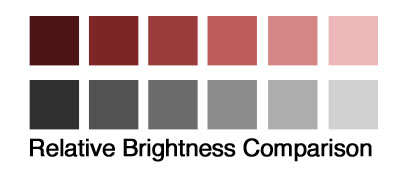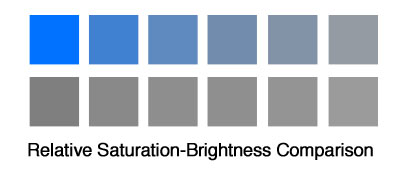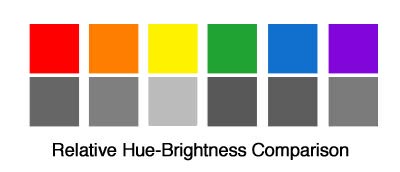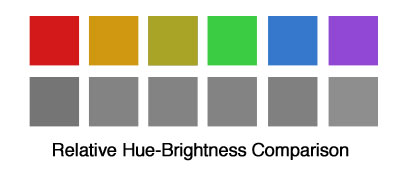Brightness
Brightness refers to the relative lightness or darkness of a color. This is generally achieved by adding black or white to a color and will, as a result, affect the saturation of a color. “High” brightness refers to colors that are closer to white on a brightness scale and “low” brightness refers to colors that are closer to black on a brightness scale.
Alternate terms: value


The image below illustrates a change in brightness from a low brightness red to a high brightness red. The gray squares below the red squares indicate the brightness of the appropriate red square for comparison. (Note: the saturation of the red changes as well, losing saturation as the brightness increases)

The image below illustrates a change in saturation from high saturation blue on the left to low saturation blue on the right. The gray squares are provided for reference as they indicate the brightness of the appropriate blue square. Note that while the saturation changes, the brightness does not.

The image below illustrates a change in hue. The top row depicts a range of hues (red, orange, yellow, green, blue, and violet). The second row depicts gray reference squares indicating the brightness of the matching hue. Note that some colors are inherently high brightness (yellow) and others are inherently lower brightness (green and blue).

The image below illustrates another change in hue. Note that while the hue changes, the brightness as indicated by the gray reference squares, does not. To achieve similar brightness, the saturation must be altered. This is particularly noticeable in the yellow square below that appears as a less “pure” yellow when compared to the Hue illustration above.
